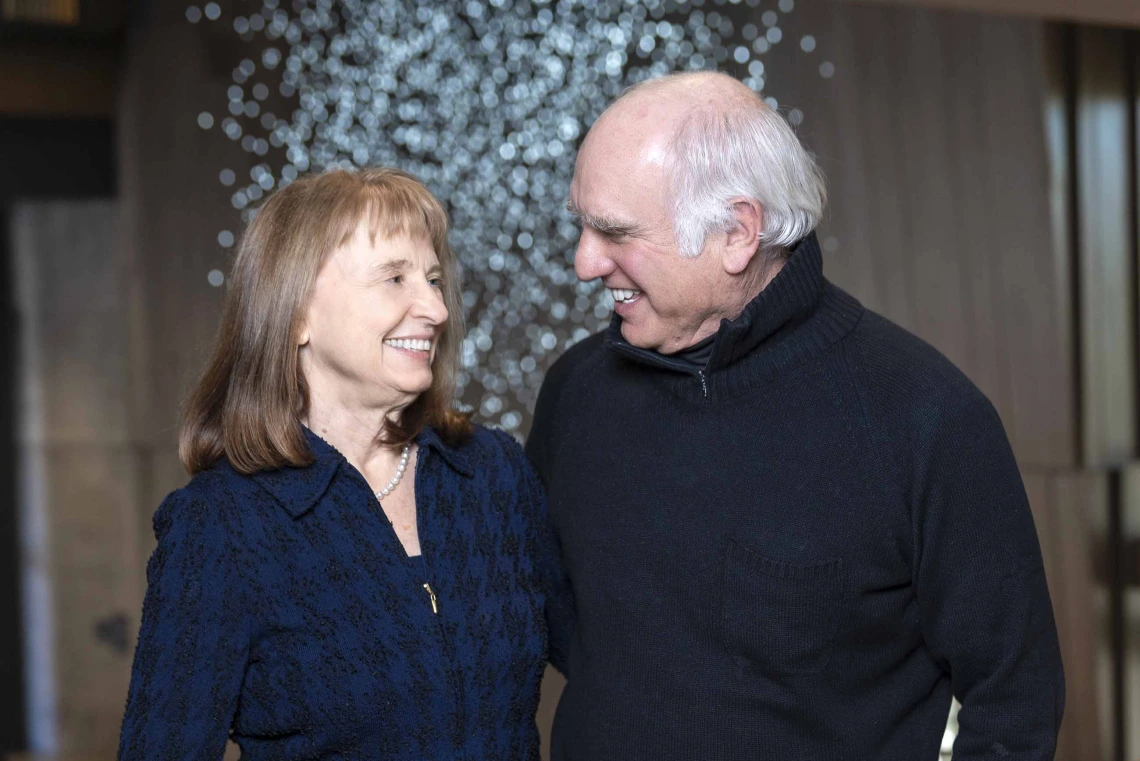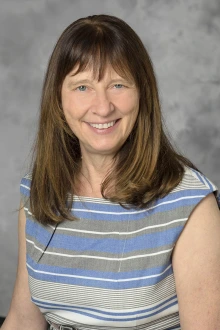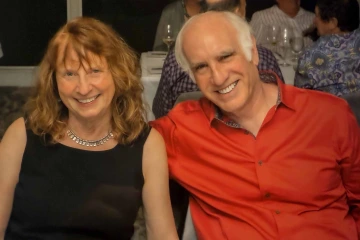Birds of a feather flourish together
U of A researchers Richard Lane and Karen Weihs create “Lovebird Scale” to measure the quality of long-term relationships.

Karen Weihs, MD, and Richard D. Lane, MD, PhD, used their own relationship as the basis of the Lovebird Scale, a compatibility test designed to measure the quality of longtime relationships.
Photo by Noelle Haro-Gomez, U of A Health Sciences Office of Communications
Richard D. Lane, MD, PhD, and Karen Weihs, MD, love playing pickleball together. They also enjoy going out to the symphony as much as they love staying in, curled up on the couch watching their favorite TV shows, like “The Bear.”
In fact, on the Lovebird Scale — a psychological tool designed to measure the quality of a romantic relationship — the two score a perfect 100.
Of course, it is their test.

Richard D. Lane, MD, PhD
Photo by Noelle Haro-Gomez, U of A Health Sciences Office of Communications
“We know the answer key,” joked Lane, a professor of psychiatry, neuroscience and psychology at the University of Arizona College of Medicine – Tucson.
The couple, who’ve been together since 2001, are behind a compatibility study published in the journal Behavioral Sciences in August. Lane and Weihs wrote the paper with former U of A research assistant Sara Cloonan, now a doctoral student in Georgia, and Lara Ault of Saint Leo University in Florida. While they hatched the idea 20 years ago, Lane and Weihs back-burnered their passion project for more pressing research. But the Lovebird Scale dovetails with their work: Lane focuses on emotions and health while Weihs, a professor of psychiatry at the College of Medicine – Tucson, researches family processes and emotion regulation as they affect mental health and disease progression.
Yes, not only do they play together, they enjoy working together, too.
“We love the process of figuring things out and doing science,” Weihs said.
A special connection
Lovebirds of the feathered variety are a small parrot species known for the loving, attentive bond they form with their mates. Similarly, human lovebirds are those duos who are in love and in sync and everyone sees it.
“It’s a special kind of loving, romantic connection that enables each person to become the best version of themselves,” Lane said.

Karen Weihs, MD
U of A Bicommunications
Just being part of a longtime couple, though, doesn’t automatically make you lovebirds. Many partners can be described as committed but ambivalent. That is, they stay together not because of any special connection but for other reasons, such as family or financial obligations.
So, while some couples stay attached because it’s easier than breaking up, lovebirds thrive on actively nurturing their relationship into a flourishing partnership.
Lane said the scale came about because while it’s well-established that being in a coupled relationship is better for your health, especially for men, there hasn’t been research on a great relationship versus a “good enough relationship.”
“As a psychiatrist, when I was trained in couples therapy, one of the things that we learned is that all relationships are ambivalent,” he said. “I think what I came to realize from my own personal experience is that there are different gradations of ambivalence. No relationship is perfect, and relationships require work, but the question is, how ambivalent and how much work? That’s what we’re trying to differentiate.
“There are some relationships where there’s work, but it’s work you want to do because it makes for a really good time, as opposed to, ‘Oh, my God, this is drudgery. I have to grin and bear it.’ There’s a difference between those two, and that’s what we’re trying to capture.”
Rating relationships
The research looks at the results of three studies of nearly 1,000 adults in the United States who were in romantic relationships for at least six months. The scale measures three main elements: “mutuality,” referring to trust and respect; “romance,” which looks at passion and intimacy; and “disconnect,” or lack of connection or a couple’s indifference.
“Most relationship satisfaction inventories really ask people just to rate how happy or satisfied they are in different domains of the relationship,” Lane said. “But what we tried to do with the scale was to capture the thoughts, feelings, behaviors and habits that actually characterize lovebird relationships.”

Richard D. Lane, MD, PhD, and Karen Weihs, MD, struck up a friendship and then a long-distance romance before Weihs moved to Tucson.
Photo by Manas Parekh, Azamara
Some sample questions, which couples rated on a scale from strongly agree to strongly disagree, included:
• Sometimes when I’m alone I find myself thinking about how much I love my partner.
• Touching is natural and fundamental to our relationship.
• My partner accepts every part of me, even the things I dislike about myself.
“We came up with the items primarily based on our experience of being together but also got suggestions from other couples we know who have this kind of connection,” said Lane.
Before they started dating, Lane and Weihs knew each other from conferences. In fact, they met at one where Weihs was presenting research and had cited Lane’s work. She was excited when he walked past and she read his name tag.
“I said, ‘Oh, I know you,’ and we struck up a conversation about repressive coping and non-expression and how we study it,” Weihs recalled.
Their romance blossomed from afar, with Lane in Tucson and Weihs anchored in Washington, D.C., until Weihs joined the U of A in 2005. They did the long-distance thing, and now they’ve gone to the other extreme: spending five months in the close confines of a cruise ship cabin while they sail around the world until June 11. Which, actually, is the true-life test to No. 11 on the Lovebird Scale: The more time we spend together the more I enjoy my partner’s company.
With additional reporting by Nita Ramsundar.

